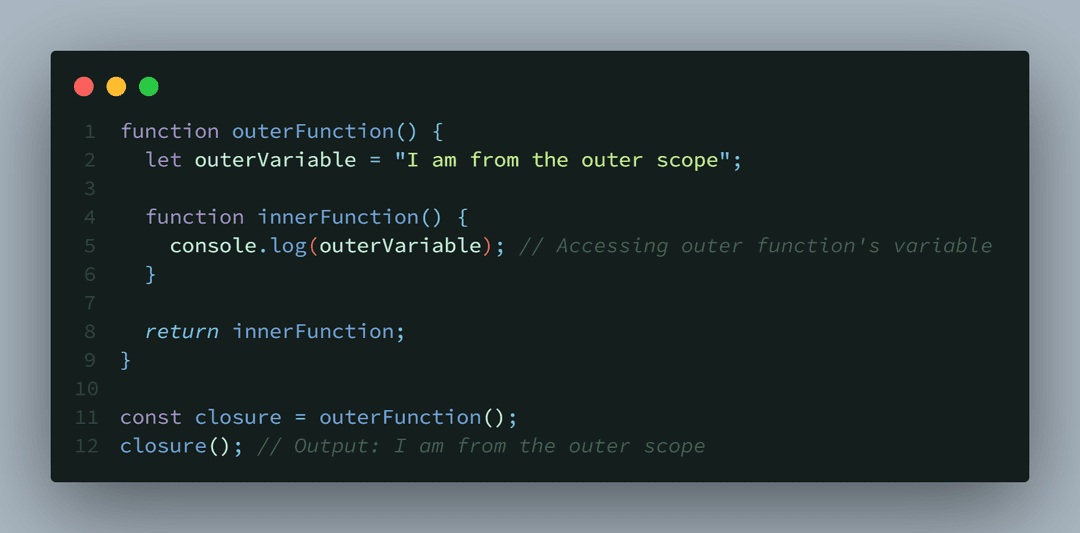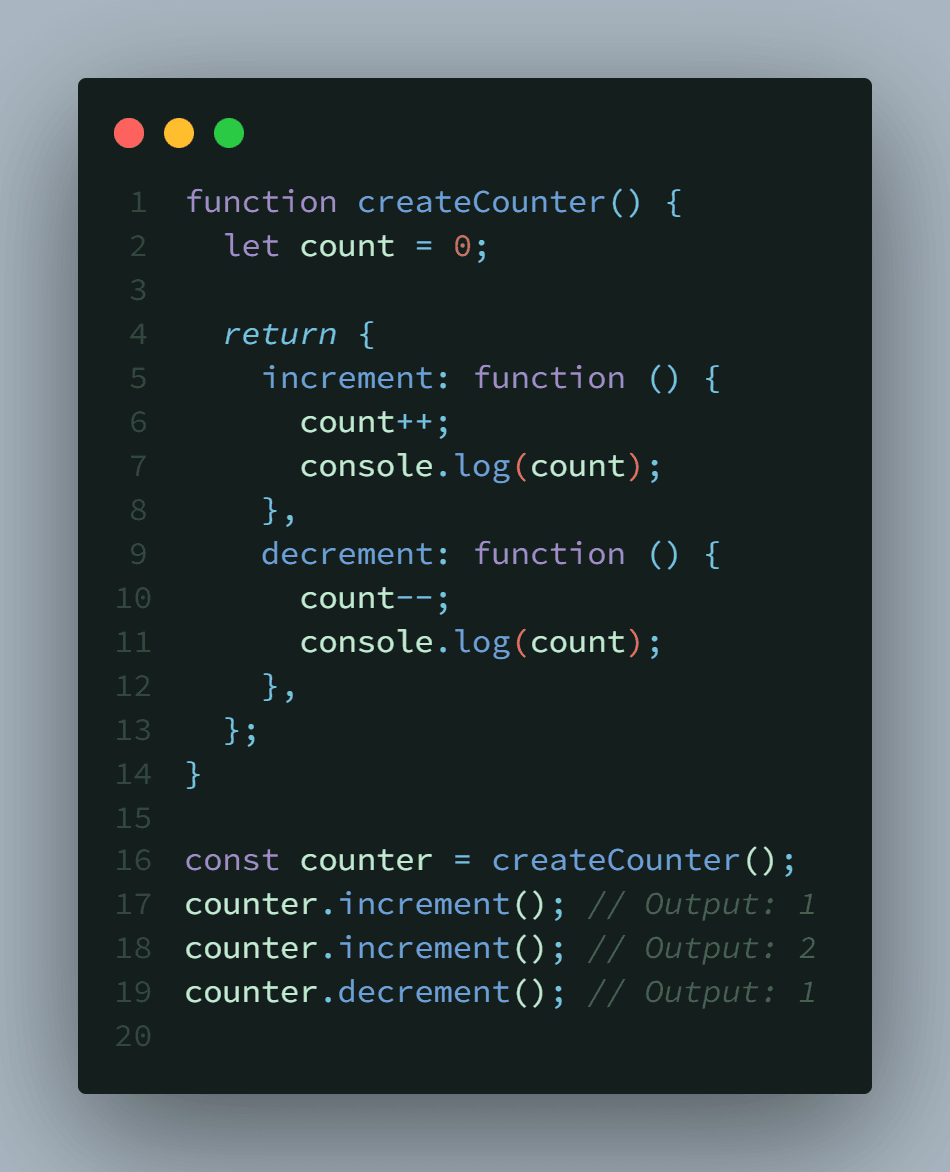2024-06-07 . 1 min(s)
The Basics of Javascript Closures

JavaScript closures are a fundamental concept that every aspiring Fullstack Developer should understand. Closures are functions that access the variables from another function’s scope. This is often called "lexical scoping" and can be a powerful tool in your JavaScript toolkit.
What is a Closure?
A closure is created whenever a function is defined inside another function, allowing the inner function to access the outer function’s variables. Even after the outer function has finished executing, the inner function retains access to these variables.
Example of a Closure
Here’s a simple example to illustrate how closures work:

In this example, innerFunction is a closure that captures the outerVariable from its parent, outerFunction. Even though outerFunction has finished executing, innerFunction can still access outerVariable.
Practical Uses of Closures
Closures are commonly used for:
- Data Privacy: Encapsulating private variables and exposing only the necessary functions.

- Callbacks and Event Handlers: Maintaining state in asynchronous operations.

- Function Currying: Transforming a function with multiple arguments into a series of functions with single arguments.

Conclusion
Understanding closures is essential for mastering JavaScript. They provide a way to encapsulate state and create more modular, maintainable code. By leveraging closures, you can write more robust and flexible applications.
Happy coding!